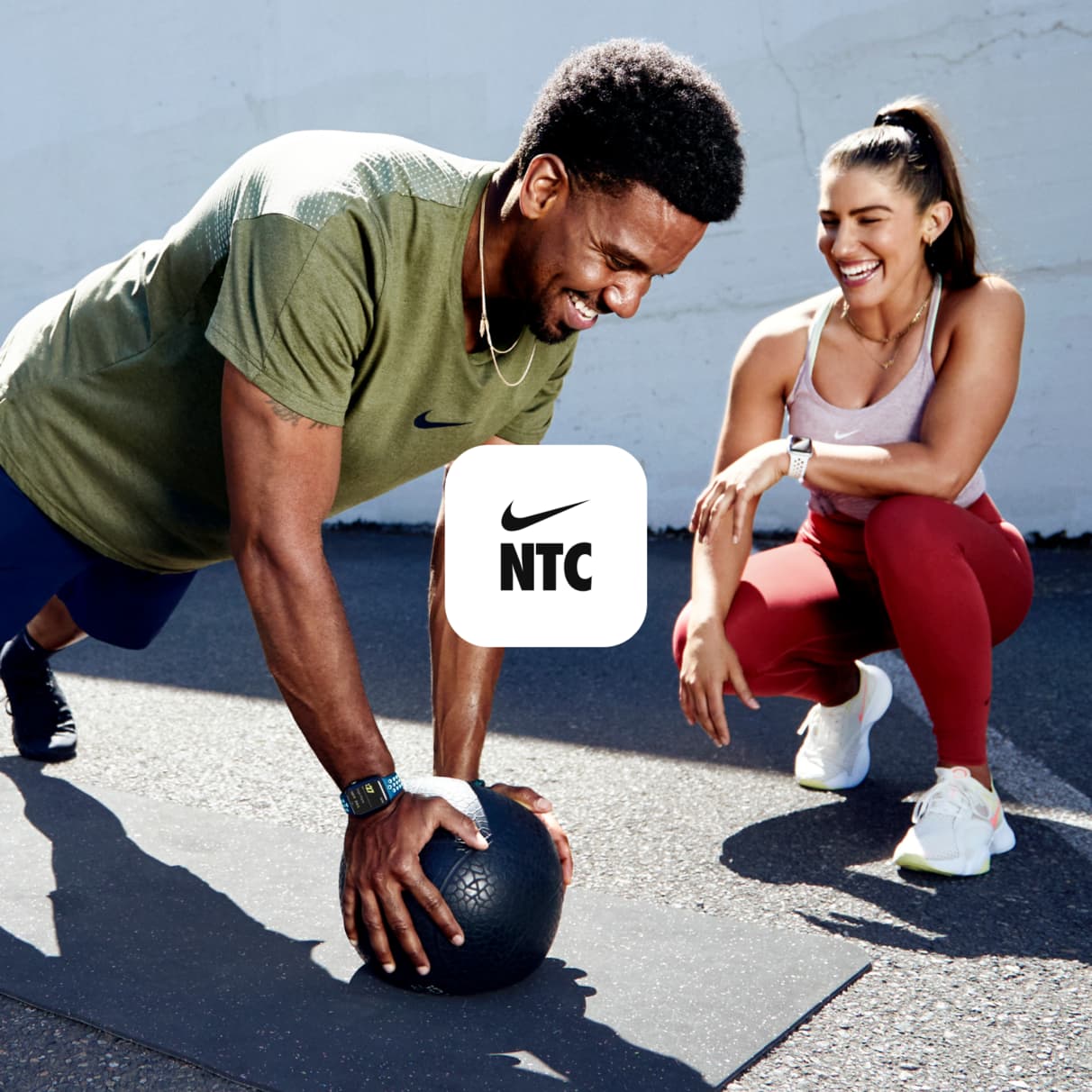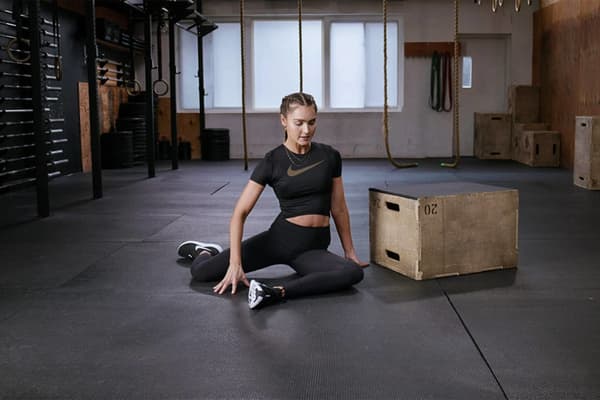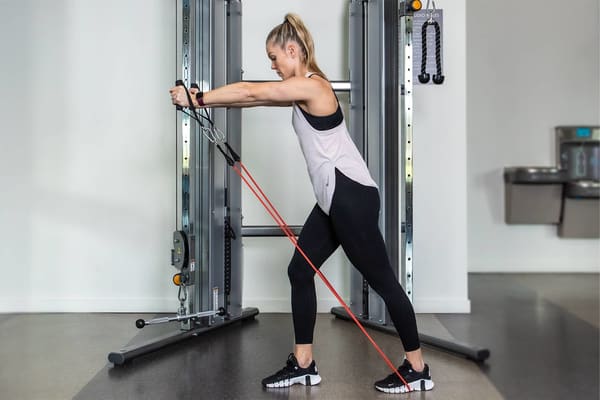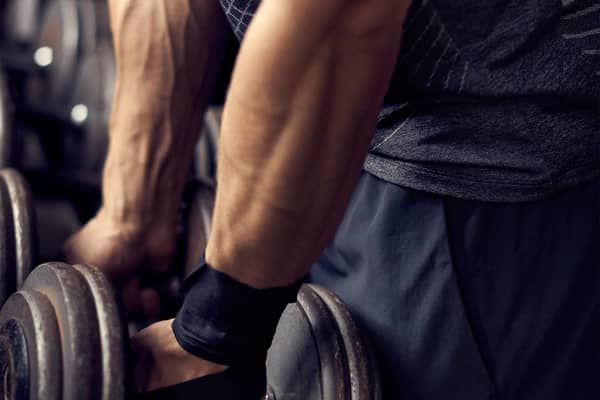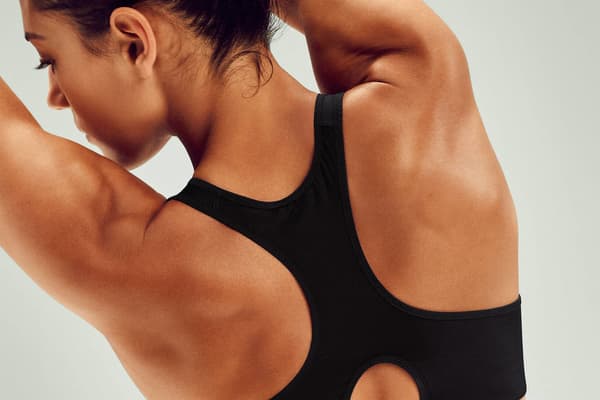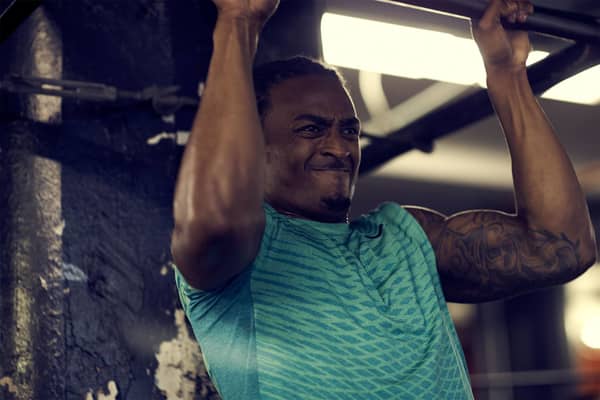10 Benefits of Bodyweight Exercises According to Experts
Sport & Activity
Top trainers and experts weigh in on how these simple moves can be key to building overall fitness and strength.

Bodyweight exercises can serve as a key foundation in a well-rounded fitness routine. In fact, people of all fitness levels can benefit from incorporating these moves into their workouts.
"Bodyweight [exercise] is great for beginners because they need to learn how to handle their bodyweight first as they learn fundamental movements, like a push-up or squat", said Noam Tamir, CSCS and founder and CEO of TS Fitness in New York City. "For more advanced individuals, they can progress into more challenging exercises, such as Bulgarian split squats, which require more stability and strength than a bodyweight squat. From there you can add explosiveness with a jump."
Check out these perks of incorporating bodyweight moves into your fitness routine, according to experts.
1. Bodyweight exercises are functional for everyday life.
Bodyweight exercises, such as push-ups, lunges and squats, help train many of the movement patterns used in everyday life. For example, standing up from sitting in a chair is essentially a squat.
"Bodyweight exercises improve your functional fitness as they mimic real-life movements, and many muscle groups and joints support each other to complete a repetition", said Ben Walker, C.P.T., EQF Level 4 and owner of Anywhere Fitness in Dublin, Ireland. "This keeps the body supple and increases the range of motion in your joints. "They are referred to as multi-joint exercises as you transition to using more than one muscle group".
2. Bodyweight exercises build muscle.
Using the resistance of your own body weight can help grow and maintain muscle. According to the American Council on Exercise (ACE), bodyweight exercises put muscles under tension, resulting in muscle tissue damage that inspires growth. But in order to continue progress, it's important to challenge the muscles regularly.
"The more advanced you are, the harder it will be to add muscle using bodyweight exercises, since you have to find very challenging ways to create resistance to stimulate muscle growth", Tamir said. "To continually put muscle [on] by only doing bodyweight exercises, you must create variability".
Three elements to do so are to change the exercise's tempo, variation and volume, Tamir recommended. To make a move more challenging with tempo, you can increase the time under tension and do the exercise more slowly, or speed it up. The ACE notes that focusing on the eccentric phase (for example, the downward movement in a squat) of an exercise creates the most muscle tissue damage, which ultimately catalyses growth.
Doing different variations of bodyweight exercises can also inject more resistance. For example, Tamir suggested doing single-limb exercises, or unilateral movements, such as a single-leg squat. But make sure you've mastered the bilateral move first in order to be safe.
Lastly, increasing the volume by doing more reps and sets can also help stimulate muscle growth, Tamir said.
Bodyweight exercises are particularly beneficial for older adults who are at a higher risk of sarcopenia, the loss of muscle mass and strength. A 2019 study in Geriatrics Gerontology found that doing bodyweight resistance exercises while taking a protein supplement with vitamin D helped increase muscle mass and strength in older adults with sarcopenia.
3. Bodyweight exercises help improve core stability and balance.
Fortifying a strong core isn't just essential for athletic performance; it's also a key part in improving balance and body awareness, which can help to prevent (and recover from) injuries over time.
"Bodyweight exercises are great for building core strength as the abdominal muscles are always engaged, either as a primary or secondary muscle group", Walker said. "If not activated primarily during a variation of the plank, they are constantly working while stabilising movements such as squats, lunges, push-ups or pull-ups. The core is braced during all of these exercises".
According to a 2019 study in the Journal of Athletic Training, core stability training can help improve lower limb and trunk biomechanics, which can prevent sports-related injuries. Similarly, a 2018 systematic review in Physical Therapy in Sport also found that impaired core stability is associated with lower-extremity injuries in healthy athletes.
The core is also activated during unilateral movements, Walker noted. For example, if you're doing a step-up, one leg is supporting the entire weight of the body, Walker explained. This forces the body to use the core muscles to stabilise and support the movement. Moreover, "Our motor senses are enhanced to improve our coordination", he added.
4. Bodyweight exercises help beginners ease into using weights.
For those who are new to fitness or getting back into a workout routine after a hiatus, bodyweight exercises are a good place to start before tacking on resistance bands, dumb-bells or other fitness equipment.
That's because having solid exercise form and nailing down movement patterns with body weight will ultimately help build up to the strength needed to add outside load.
"Making sure that exercise form is learned prior to adding weight is important in order to optimise performance and decrease the chance of injury. For example, hinging properly in a single-leg deadlift translates into a better weighted deadlift", Tamir said.
This is also true for more advanced exercisers who have goals of hypertrophy (building bigger muscles).
"[Hypertrophy] is generally achieved by lifting the heaviest weight possible between eight to 12 reps. Before your body can handle this process, it needs an introduction without the muscles and joints feeling so overwhelmed and resulting in injury", Walker said.
Bodyweight exercises can help with accessing the strength needed to progress to a heavier load by working the muscle groups with higher reps and less load, Walker explained.
"We slowly increase the ability of our muscle fibres to tear and repair. After a few successive weeks, we can now add dumb-bells, kettlebells and barbells to our workouts to increase muscle growth", he said.
5. Bodyweight exercises help increase flexibility and mobility.
Doing daily bodyweight stretches can naturally improve range of motion in the joints and make muscles more flexible, helping athletes get the most out of each exercise in a workout. When joints and muscles don't move as often, they can stiffen and become tight over time.
There are two main approaches to stretching: dynamic and static. Dynamic stretching involves actively moving your joints and is generally recommended before exercise as it warms up your muscles and helps improve blood flow, according to the Cleveland Clinic. On the other hand, static stretching is best for a post-workout cool-down because it involves holding a position for a few seconds at a time to help relax the muscle.
In fact, a 2017 review in Sports Medicine found that dynamic stretching is an ideal pre-workout activity as it increases joint range of motion and enhances muscle force and power. Meanwhile, a 2012 review in the Scandinavian Journal of Medicine & Science in Sports suggested that static stretching can hinder performance and should be avoided as part of a warm-up routine.
Incorporating stretches through mobility and flexibility training can help reduce risk of injury, ward off pain, help prevent muscle imbalances, and even improve posture (more on this later), according to the National Academy of Sports Medicine.
Bodyweight stretches for mobility and flexibility take the body through different planes of motion. Be sure to incorporate stretches during a warm-up or cool-down to help the joints stay healthy and muscles pliable for exercise.
6. Bodyweight HIIT training can help elevate your metabolism after exercise.
Burpees, squat jumps and mountain climbers are just some of the bodyweight exercises that can help break a sweat. "One of the most efficient ways to burn plenty of calories with bodyweight exercises is through high-intensity interval training (HIIT), which involves doing intervals alternating between bouts of high-intensity exercise and rest. This not only helps you burn calories during a workout but also creates an afterburn effect post-workout", Tamir explained.
Moreover, the more muscle built through bodyweight resistance exercise, the more metabolic rate increases, Tamir said.
7. Bodyweight exercises can be used for both cardio and strength workouts.
When a person is pressed for time, doing bodyweight exercises can help boost cardiovascular endurance and strengthen muscles in the same workout.
"We can effectively combine cardio and strength training with bodyweight exercises by keeping them dynamic and high in repetition. Workouts that enable more movement while pushing most of our weight will increase our heart rate more and break down the muscle fibres more effectively", Walker said.
Some exercise examples are lunges, squats, step-ups and plank variations. These exercises access a variety of muscle groups while getting the heart rate up because they require movement at a faster pace. Introducing different planes of motion (front to back, side to side and rotation) can also add an element of cardio and strength.
"Lunges can be performed forwards and backwards. Squats, step-ups and planks can also be performed travelling with sideways movement. All of these movements add intensity to our cardio routine while improving the functionality of our core, hips and upper body", Walker said.
8. Bodyweight exercises support good posture.
If you work at a desk or sit for long hours with poor posture, you might begin to feel some tightness or pain from the rounding of your shoulders or hunching your back, which can happen over time. Fortunately, getting up to do some bodyweight stretches and exercises can help reverse the effects of poor posture.
Bodyweight exercises, such as glute bridges, push-ups and supermans, can help to improve your posture as they support the natural alignment of your joints and muscles. They also help strengthen muscles, like your pecs (chest), hip flexors and glutes, which may feel tight or become weak due to sitting.
9. Bodyweight exercises help relieve stress.
Any form of exercise, including bodyweight exercise, releases mood-boosting endorphins. Whether it's walking or running, doing HIIT or busting out a few burpees, moving the body can help take your mind off a stressful situation.
In fact, a 2013 review in the British Journal of Sports Medicine suggested that exercise, in addition to antidepressant treatment (prescribed by a licensed professional), can help reduce anxiety symptoms in those living with anxiety disorders.
Research also shows that group fitness may help decrease stress and improve mental and emotional health. A 2017 study in the Journal of Osteopathic Medicine, which recruited first- and second-year students to follow a 30-minute group fitness class for 12 weeks, showed that exercise significantly decreased their perceived stress and improved their physical, mental and emotional health.
10. Bodyweight moves can be done anywhere, any time.
Perhaps the greatest benefit of bodyweight exercises is that they're incredibly versatile and can be done virtually anywhere that provides enough space to work out. Plus, they can easily be adjusted to different levels of intensity or challenge by changing the rep range, tempo and variation.
"Your gym is a body and you don't need to pack fitness equipment wherever you go. The exercises are perfect for doing a 15- to 60-minute workout. For this reason, these drills are also a great stepping stone for people contemplating joining the gym again after a hiatus", Walker said.
Words by: Tiffany Ayuda
